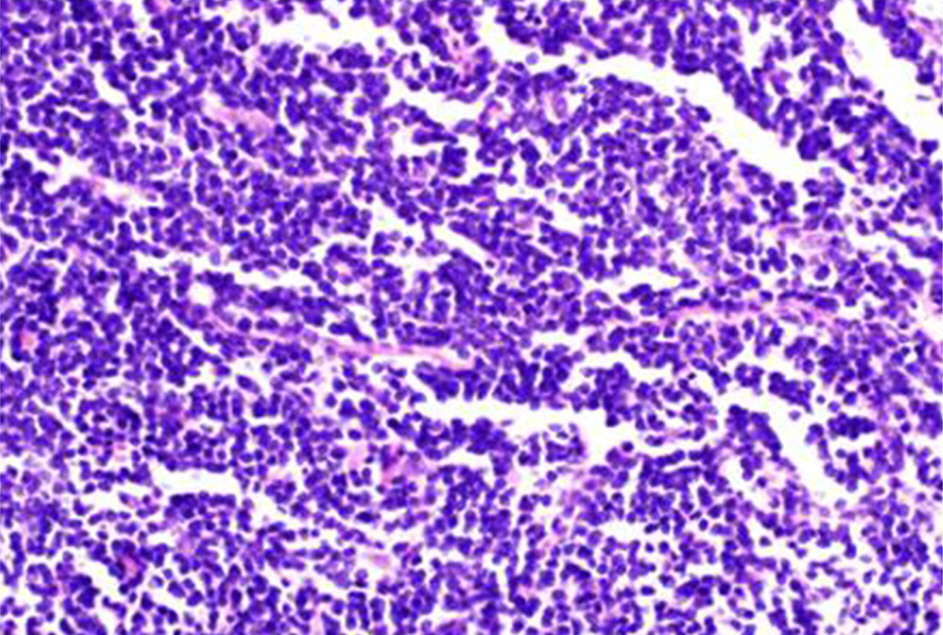J Korean Ophthalmol Soc.
2015 Jun;56(6):815-822. 10.3341/jkos.2015.56.6.815.
Comparison of Ocular Adnexal Mantle Cell Lymphoma and MALT Lymphoma
- Affiliations
-
- 1Department of Ophthalmology, Chungnam National University, School of Medicine, Daejeon, Korea. sblee@cnu.ac.kr
- 2Department of Ophthalmology, Pusan National University School of Medicine, Busan, Korea.
- 3Eyelove Eye Center, Daejeon, Korea.
- KMID: 2339144
- DOI: http://doi.org/10.3341/jkos.2015.56.6.815
Abstract
- PURPOSE
Mantle cell lymphoma (MCL) is known to have systemic dissemination with poor prognosis, but very few cases have been reported in Korea. Therefore, we analyzed clinical features and prognosis of MCL by comparing 3 cases of ocular adnexal MCL and mucosa-associated lymphoid tissue (MALT) lymphoma.
METHODS
The medical records of patients with ocular adnexal MALT lymphoma and MCL from Chungnam National University Hospital and Pusan National University Hospital from January 1999 to April 2014 were retrospectively reviewed. Immunohistochemical examination was selectively used to diagnose lymphoma subtypes. Systemic dissemination, treatment response, and recurrence were identified using radiological testing and bone marrow aspiration.
RESULTS
This study included 39 patients with ocular and ocular adnexal MALT lymphoma and 1 patient with MCL from Chungnam National University Hospital and 53 patients with MALT lymphoma and 2 patients with MCL from Pusan National University Hospital. All 3 (100%) patients diagnosed with ocular adnexal MCL were over 60 years of age. However, 28 of 92 (30.4%) patients diagnosed with MALT lymphoma were over 60 years of age. In MALT lymphoma, 3 of 92 patients presented with systemic dissemination and most patients recovered with radiotherapy. Conversely, all 3 patients with MCL showed systemic dissemination and recurrence after radiotherapy or chemotherapy, therefore, additional chemotherapy was required.
CONCLUSIONS
Contrary to MALT lymphoma, ocular and ocular adnexal MCL usually presented with systemic dissemination and complete remission was difficult even though many regimens of chemotherapy were attempted. Because MCL can be misdiagnosed as MALT lymphoma, careful evaluation should be performed.
MeSH Terms
Figure
Reference
-
References
1. Cahill M, Barnes C, Moriarty P, et al. Ocular adnexal lymphoma-comparison of MALT lymphoma with other histological types. Br J Ophthalmol. 1999; 83:742–7.
Article2. Swerdlow SH, Williams ME. From centrocytic to mantle cell lymphoma: a clinicopathologic and molecular review of 3 decades. Hum Pathol. 2002; 33:7–20.
Article3. Andersen NS, Jensen MK, de Nully Brown P, Geisler CH. A Danish population-based analysis of 105 mantle cell lymphoma patients: incidences, clinical features, response, survival and prognostic factors. Eur J Cancer. 2002; 38:401–8.4. Looi A, Gascoyne RD, Chhanabhai M, et al. Mantle cell lymphoma in the ocular adnexal region. Ophthalmology. 2005; 112:114–9.
Article5. Jenkins C, Rose GE, Bunce C, et al. Histological features of ocular adnexal lymphoma (REAL classification) and their association with patient morbidity and survival. Br J Ophthalmol. 2000; 84:907–13.
Article6. Lee JS, Song SW, Kim MS. A case of primary mantle cell lymphoma on the conjunctiva. J Korean Ophthalmol Soc. 1999; 40:2010–4.7. Freeman C, Berg JW, Cutler SJ. Occurrence and prognosis of ex-tranodal lymphomas. Cancer. 1972; 29:252–60.
Article8. Bairey O, Kremer I, Rakowsky E, et al. Orbital and adnexal involvement in systemic non-Hodgkins lymphoma. Cancer. 1994; 73:2395–9.
Article9. Coupland SE, Krause L, Delecluse HJ, et al. Lymphoproliferative lesions of the ocular adnexa. Analysis of 112 cases. Ophthalmology. 1998; 105:1430–41.10. Shields JA, Shields CL, Scartozzi R. Survey of 1264 patients with orbital tumors and simulating lesions: The 2002 Montgomery Lecture, Part 1. Ophthalmology. 2004; 111:997–1008.11. Nola M, Lukenda A, Bollmann M, et al. Outcome and prognostic factors in ocular adnexal lymphoma. Croat Med J. 2004; 45:328–32.12. Oh DE, Kim YD. Lymphoprolfierative diseases of the ocular ad-nexa in Korea. Arch Ophthalmol. 2007; 125:1668–73.13. Looi A, Gascoyne RD, Chhanabhai M, et al. Mantle cell lymphoma in the ocular adnexal region. Ophthalmology. 2005; 112:114–9.
Article14. Romaguera JE, Medeiros LJ, Hagemeister FB, et al. Frequency of gastrointestinal involvement and its clinical significance in mantle cell lymphoma. Cancer. 2003; 97:586–91.
Article15. Rasmussen P, Sjö LD, Prause JU, et al. Mantle cell lymphoma in the orbital and adnexal region. Br J Ophthalmol. 2009; 93:1047–51.
Article16. Weisenburger DD, Armitage JO. Mantle cell lymphoma-an entity comes of age. Blood. 1996; 87:4483–94.17. A clinical evaluation of the International Lymphoma Study Group classification of non-Hodgkin's lymphoma. The Non-Hodgkin's Lymphoma Classification Project. Blood. 1997; 89:3909–18.18. Liu Z, Dong HY, Gorczyca W, et al. CD5- mantle cell lymphoma. Am J Clin Pathol. 2002; 118:216–24.
Article19. Witzig TE. Current treatment approaches for mantle-cell lymphoma. J Clin Oncol. 2005; 23:6409–14.
Article20. Schulz H, Bohlius J, Skoetz N, et al. Chemotherapy plus rituximab versus chemotherapy alone for B-cell non-Hodgkin's lymphoma. Cochrane Database Syst Rev. 2007; (4):CD003805.
Article
- Full Text Links
- Actions
-
Cited
- CITED
-
- Close
- Share
- Similar articles
-
- Ocular adnexal mucosa-associated lymphoid tissue lymphoma: a narrative review
- The Prognosis of Ocular-adnexal Lymphoproliferative Lesions
- A Case of Primary Cutaneous Marginal Zone B-cell Lymphoma
- Gastrointestinal Lymphoma
- Classification of Gastrointestinal B-cell Lymphoma and Expression of Cyclin D1, bcl-2, bcl-6, p53 Protein and PCNA




